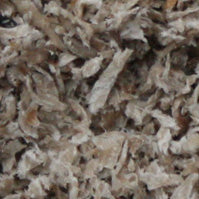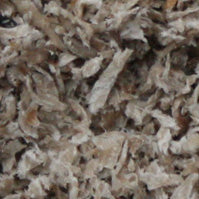Pressed Pulp
Pressed Pulp
- DM:28.0%
- Protein: 9.2%
- ME MJ/kg:13.0%
- Fibre: 18.0%
- Oil: 0.5%
- Ash: 8.0%
Couldn't load pickup availability
On arrival at a sugar factory, beet is sampled then bulked before entering the factory. Prior to processing, it is cleaned and sliced into smaller pieces after which the sugar is washed out using water at 70°C. After sugar extraction, the sliced pieces of sugar beet are mechanically pressed to remove excess liquid. This co-product is known as Pressed Pulp.
A palatable forage and partial concentrate extender. Ideal for ruminants, but not pigs and poultry. With a typical DM of 20 > 30% this product is a useful energy feed for dairy cows, beef cattle and sheep. Ideal for use in complete feeds or for use as a midday feed.
This buffer feed and moist concentrate is a high energy succulent to supplement silage when supplies are limited or the quality poor. Pressed Pulp improves the energy density of rations based on straw and hay. In complete diet systems, its high energy density and physical nature enhance the quality of the mix.

Typical Analysis
| Dry Matter | 28% |
| Crude Protein | 9.2 |
| DCP | 8 |
| ME | 13 |
| Crude Fibre | 18 |
| Oil (EE) | 0.5 |
| Ash | 8 |
| NCGD | 85 |
| NDF | 40 |
| Starch | 0.4 |
| Sugar | 6 |
| Starch & Sugars | 6.4 |
| FME | 12 |
| Salt | 0.12 |
| Calcium | 1 |
| Total Phos | 0.2 |
| Av Phos | - |
| Magnesium | 0.2 |
| Potassium | 1 |
| Sodium | 0.5 |
Benefits
- Improves the energy density of rations
- Is useful for supplementing forage when quality and quantity are low
- Is suitable as a buffer feed
- Is a natural & traceable product which is UK produced and feed assured
- Enhances physical nature and 'opens up' total mixed rations
- Improves animal performance by stimulating and increasing feed intake
- Good source of digestible fibre
- Can be clamped with forage
- Succulent and palatable
Recommended feeding
(per head / day)
Storage / Processing
Disclaimer
Feeding rates are estimates, and other factors, such as animal health and environment, can have a greater impact on how animals perform. There is no guarantee that animals will perform as expected if fed the suggested rates. Rations should be balanced to provide enough energy and protein for animals, and they should include enough forage to keep the rumen healthy. Animals also need access to fresh water at all times.
- Choosing a selection results in a full page refresh.
- Opens in a new window.
